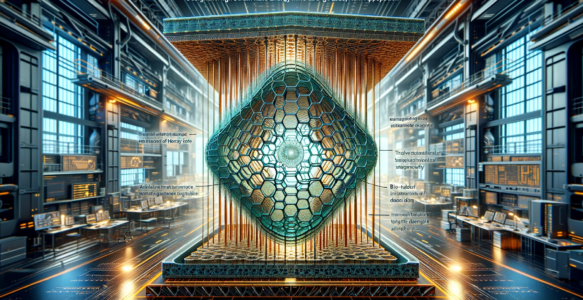The Essence of Bio-Inspired Designs
The core of these innovative sandwich structures mimics the geometric patterns found in honeycombs, known for their lightweight yet sturdy design. The research embarked on a journey to optimize this core, exploring various grid patterns through advanced Genetic Algorithm optimization. The goal was to marry the core grid with a bio-inspired bi-tubular thin-walled structure, enhancing its energy absorption capacity. The results were promising, showing that this hybrid design outperforms both traditional and solely bio-inspired designs previously documented.

Why Sandwich Panels?
Sandwich panels are not a new concept in engineering. Their application spans across various fields, such as aerospace, automotive, and civil engineering, primarily because of their excellent energy-to-weight ratio. These panels are designed to absorb and dissipate energy from impacts or blasts, protecting structures and their occupants from damage. The innovation lies in tweaking these panels to absorb more energy, making them more efficient and safer.
The Bio-Inspiration Behind the Innovation
The inspiration comes from nature’s own engineering marvels. For instance, the bamboo structure, which is known for its axial rigidity, or the beetle’s forewing, known for its resilience, have been studied to understand how natural structures withstand forces and impacts. This bio-inspiration is not just about mimicking the shape but understanding the underlying principles that give these natural structures their strength and adaptability.

The Hybrid Bio-Inspired Design
The crux of this innovation is a hybrid design that incorporates a core grid pattern optimized for energy absorption, combined with a bi-tubular structure inspired by natural elements. This design was subjected to rigorous testing under simulated blast loads, comparing its performance with both conventional and other bio-inspired designs. The hybrid design showcased an impressive improvement in energy absorption characteristics, making it a significant advancement in the field.


Implications and Future Directions
The successful integration of bio-inspired elements into engineering designs opens up new avenues for creating structures that are not only efficient in energy absorption but also lightweight and robust. This innovation holds the potential to revolutionize safety measures in industries prone to high-impact scenarios, such as automotive and aerospace, by providing more resilient materials and structures.
Moreover, this study underscores the importance of looking to nature for solutions to engineering challenges. As research continues to explore and understand the complexities of natural structures, the future of engineering will likely see more of these bio-inspired innovations, pushing the boundaries of what is possible in material science and structural design.
In conclusion, the development of hybrid bio-inspired sandwich structures marks a significant milestone in the quest for better energy-absorbing materials. By harnessing the power of nature’s design principles, engineers are paving the way for a future where structures are not only stronger and safer but also in harmony with the natural world.
Reference:
Ghanbari, J., Panirani, P.N. A hybrid bio-inspired sandwich structures for high strain rate energy absorption applications. Sci Rep 14, 2865 (2024). https://doi.org/10.1038/s41598-024-53521-2

